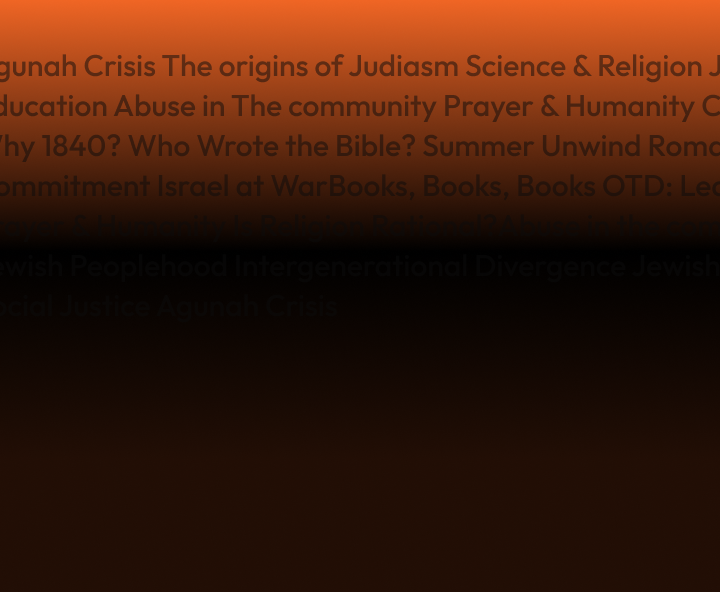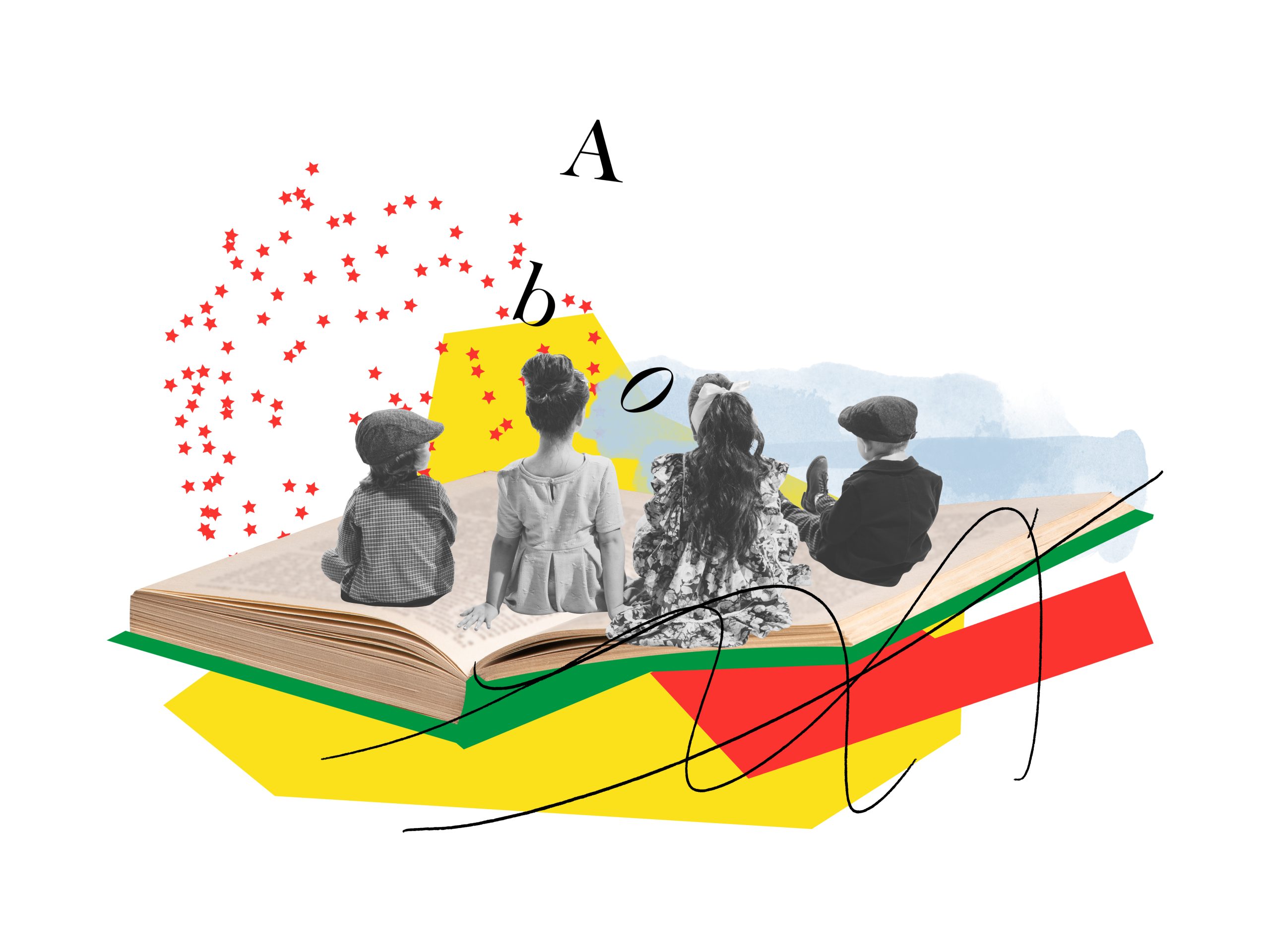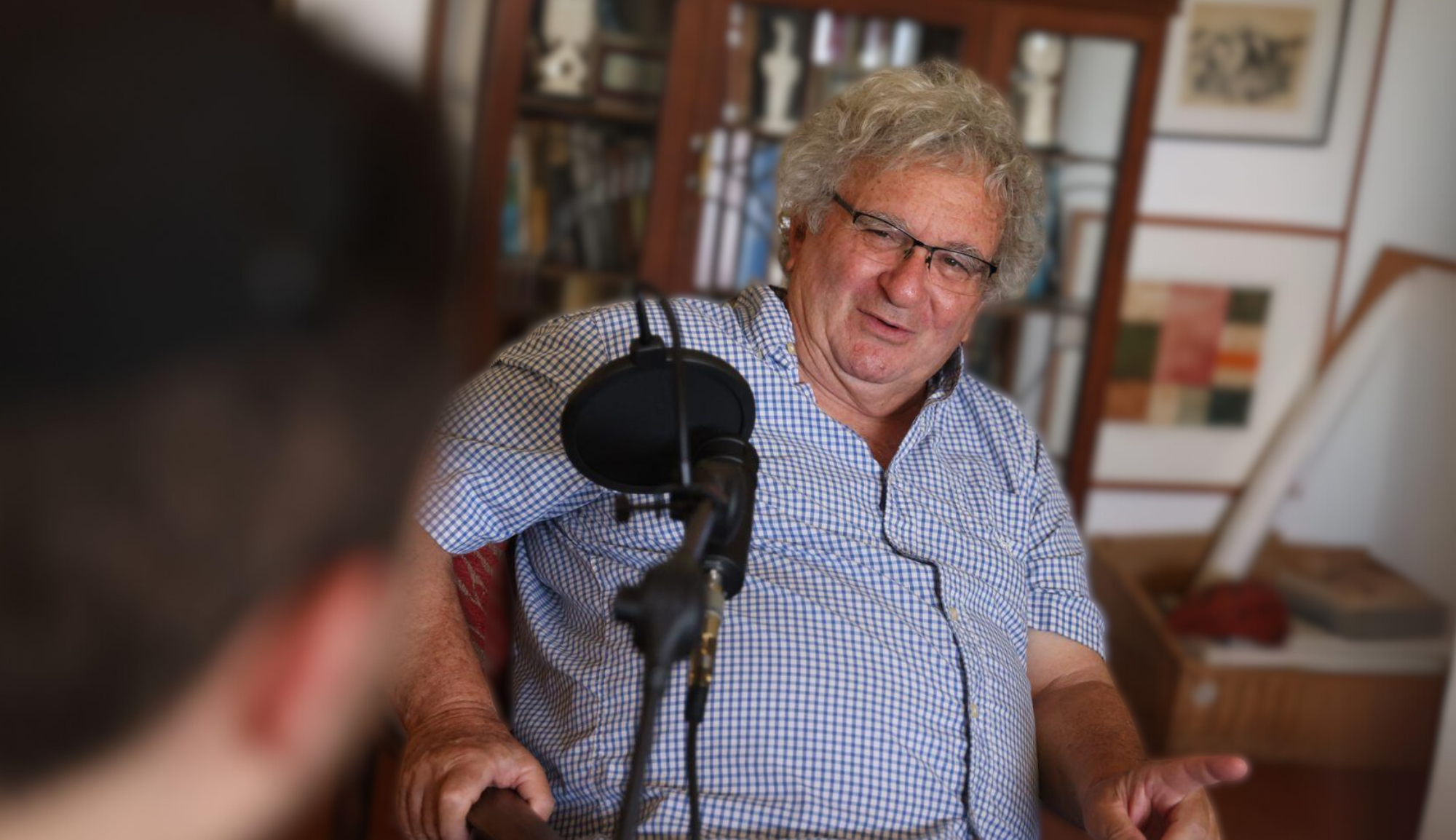This essay is the third in the author’s five-part series for 18Forty’s explorations of the origins of Judaism. The second can be found here. The entire series can be found compiled here.
One expects a legal code to say what the law is. On this count, the Mishna is less like a legal code than a record of disagreements about the law. In it, the Sages will say one thing and Rabbi Yehuda might say another. If all these halachot were transmitted at Sinai, why is there so much machloket?
In other Tannaitic works like the Mechilta, Sifra, and Sifrei, there is even more dispute, which seems to arise from Chazal’s disagreements about how to interpret, or darshen, verses in the Written Torah. The Tannaim—the sages whose words are recorded in the Mishna and other rabbinic works of the early common era—darshen based on various textual cues and exegetical principles, such as the 13 Middot of Rabbi Yishmael. These 13 principles are found in a beraita (Tannaitic teaching) by Rabbi Yishmael that may be familiar from the Siddur—it’s said right before Pesukei de-Zimra. The principles include, among others, kal-vachomer (a fortiori) and gezerah shavah (identical words used in different Torah passages). But why do the Sages engage in linguistic jousting matches over the Written Torah to derive the Oral Torah’s laws? Weren’t the laws passed down from Sinai orally?
In this installment, we will explore four answers to this question.
I. The Geonim: The Sages Innovated Nothing
The Geonim, rabbinic leaders who flourished in academies in Babylonia (modern-day Iraq) from around the years 600-1000, were the first to systematically address this problem. Their answer is straightforward: Everything was given to Moshe at Sinai, but machloket exists because, over time, people forgot what Moshe received and had to reconstruct it. The Oral Torah was not transmitted as diligently as it should have been.
The Geonim’s position is most clearly expressed in a later work, the introduction to the Sefer ha-Kabbalah, The Book of Tradition, by the 12th-century Spanish thinker Abraham ibn Daud. He writes (originally in Arabic), “Never did the Sages of the Talmud, and certainly not the Sages of the Mishna, teach anything, however trivial, of their own invention, except for the enactments which were made by universal agreement in order to make a hedge around the Torah.” Chazal were not innovators but only bearers of tradition.
So how did machloket arise? “Our rabbis of blessed memory,” Ibn Daud writes, “never differed with respect to a commandment in principle, but only with respect to its detail; for they had heard the principle from their teachers, but had not inquired as to its details since they had not waited upon their masters sufficiently” (emphasis added). Ibn Daud believed that rabbinic disputes are quite limited in scope and were due to errors in transmission.
The Geonim’s position about machloket being due to a breakdown in transmission derives some support from a Gemara in Sanhedrin 88b that speaks of machloket increasing when the students of Shammai and Hillel were insufficiently attentive to their teachers. And Ibn Daud’s other point, that the Sages invented nothing of their own, is in line with the maximalist Gemarot in Berachot and Megillah ascribing the entire Oral Torah to Sinai. But this view is also difficult. What about all the derashot where it seems like the rabbis’ exegesis creates new law?
The Geonim responded that midrashic exegesis is something of an illusion. Chazal were not generating new law from their creative readings of the Torah. Rather, they were finding scriptural supports on which to hang the traditions that had been passed down to them. (The fact that those traditions were disputed was merely a function of a breakdown in transmission.)
In the 1300s, the French philosopher Rabbi Levi ben Gershon, Ralbag or Gersonides, put the matter as follows in the introduction to his Torah commentary:
וזה שהם סמכו אלו הדברים האמתיים המקובלים להם במצות התורה לפסוקים ההם להיותם כדמות רמז ואסמכתא לדברים ההם לא שיהיה דעתם שיהיה מוצא אלו הדינין מאלו המקומות . . . אבל הם אצלם מקובלים איש מפי איש עד משה רבינו ובקשו להם רמז מן הכתוב
[Chazal] supported the true traditions about the Torah’s commandments with verses that are like hints and supports to these things, but they were not actually deriving the laws from those places . . . rather, they were passed down from person to person back to Moshe our teacher and [Chazal] merely sought a hint from the written Torah.
This approach is all well and good for some derashot. When Chazal darshen the verse about using a pri etz hadar—“a fruit of a beautiful tree”— on Sukkot and, based on certain linguistic features, conclude that it refers to using an etrog (Sukkah 35a), I can readily accept that they had a pre-existing tradition to use an etrog and were only interpreting the verse to support their tradition. Otherwise, what did they use last year on Sukkot?
But in other cases, it seems like Chazal’s derashot generate new laws. In Sanhedrin 51b, the Gemara discusses instances when the daughter of a kohen who committed adultery is put to death by seraifah, burning, instead of chenek, strangulation. The former is considered a more severe type of death penalty. Rabbi Yishmael imposes the stricter penalty only when she is an arusah—when kiddushin, the first stage of marriage, has been completed, but not the second stage. Rabbi Akiva extends the punishment to when the marriage has been consummated—when she is a nesuah. The Gemara records why they disagree:
אמר ליה רבי עקיבא: ישמעאל אחי בת ובת אני דורש. – אמר ליה: וכי מפני שאתה דורש בת ובת נוציא זו לשריפה
Rabbi Akiva said to him: Yishmael, my brother, I derive it from the fact that the verse could have stated: “The daughter of a priest,” but instead states: “And the daughter of a priest,” [with an extra vav]. Rabbi Yishmael replied: And because of this derivation from an extra vav we should take out this woman for burning?
It does not appear that Rabbi Akiva and Rabbi Yishmael received different traditions from their teachers that they were trying to support with a Torah verse. Rather, it seems like they were faced with a blank canvas as to the appropriate punishment and reached different conclusions because they differed over whether a derasha from the vav was appropriate. Thus, they seem to agree in principle that new halachot can be derived directly from the Written Torah.
For this reason, the Geonim’s view—that everything was received at Sinai, derash never created halacha, and machloket is due only to forgetfulness or inattention—is somewhat difficult to subscribe to in full. Some scholars have suggested that the Geonim’s position was in part polemical. In those times, the Karaites, a non-rabbinic group who believed only the Written Torah but not the Oral Torah, posed a threat to the Geonim’s hegemony in Babylonia. The Geonim’s maximalist view of the Oral Torah established them as the authentic bearers of tradition and denied the Karaites’ legitimacy.
II. The Rambam: The Sages Innovated a Great Deal
Over time, as the Geonim’s influence declined, new voices formulated different conceptions of the Oral Torah. Most important is the view of the Rambam (Maimonides), the towering rabbinic scholar of the 12th century who spent much of his life in Egypt. In his introduction to his commentary on the Mishna (also originally in Arabic), the Rambam writes:
סברת מי שחשב שגם הדינים שיש בהם מחלוקת קבלה ממשה, ונפלה בהם מחלוקת מחמת טעות בקבלה או שכחה, ושהאחד צודק בקבלתו והשני טעה בקבלתו, או ששכח, או שלא שמע מרבו כל מה שצריך לשמוע . . . הנה זה חי ה’ דבר מגונה ומוזר מאד, והוא דבר בלתי נכון ולא מתאים לכללים, וחושד באנשים שמהם קבלנו את התורה
Those that say that the laws about which there is machloket were also received by Moshe, and debate occurred because of a mistake in transmission or forgetfulness—such as one correctly receiving the law and one mistakenly doing so, or that he didn’t hear from his teacher everything that needed to be heard … this is, as God lives, a very strange and unpleasant idea, and it’s not correct or acceptable at all and it casts aspersions on the men from whom we received the Torah.
The Rambam forcefully disagrees with the Geonim, arguing that allowing for forgetfulness casts doubt on the Oral Torah’s entire chain of transmission.
So how did machloket develop? The Rambam explains:
וכל מה שקבל ממנו הוא או אחד הזקנים אין בו משא ומתן ולא נפלה בו מחלוקת, ומה שלא שמעו מן הנביא ע”ה יש בסעיפיו משא ומתן, ונלמד בו הדין בדרכי העיון בשלש עשרה המדות שניתנו לו בסיני, והן י”ג מדות שהתורה נדרשת בהן
There is no dispute about anything received from [Yehoshua from Moshe] or from one of the elders, but there can be machloket regarding what was not heard from the prophet and but was learned through extrapolation from the 13 principles that were given to Moshe at Sinai—these are the 13 Middot that the Torah can be darshened with [from the beraita of Rabbi Yishmael] (emphasis added).
The Rambam describes several categories where there can and can’t be machloket depending on how the law was received. Over the centuries, people have raised all kinds of difficulties with some of the Rambam’s categorizations. Yet, for our purposes, the principle is simple enough: There can be no machloket about received Sinaitic traditions. But many laws were not said to Moshe at Sinai and were extrapolated from the Written Torah using exegetical principles, namely, the 13 Middot of Rabbi Yishmael. There can be debate about those matters.
In fact, according to the Rambam in his Sefer ha-Mitzvot—where he counts all 613 commandments—most of the Oral Torah was derived from the 13 Middot. This means that there could in theory be a great deal of dispute in the Oral Torah, and indeed there is. The Rambam’s position sounds akin to what we saw in Shemot Rabbah—that Moshe was not given the entire Oral Torah at Sinai, only principles of interpretation.
The Rambam’s position is revolutionary and explanatory. But he raises a cautionary flag. The Rambam limits Chazal’s authority to create new law by saying that the laws generated through the 13 Middot are rabbinic-level obligations (de-rabbanan) and not Torah-level obligations (de-oraita). (That said, some have recently disputed that the Rambam said this.)
III. The Ramban: The Oral Torah Was Driven by Rabbinic Interpretation
The Ramban (Nahmanides), the great 13th-century Catalonian scholar, disagreed. I’ll call his position a third approach, even though it is something of a hybrid position that has similarities to both the Rambam’s approach and the fourth approach of the Ritva below. The Ramban writes:
ואנו לא מצינו דעת חכמים בזה. שהמדות כולן אצלם כדבר מפורש בתורה ודורשים אותן מדעתם. . . שכל דבר הנדרש בתלמוד באחת מכל שלש עשרה מדות הוא מדאורייתא עד שנשמע אותם שיאמרו שהוא אסמכתא
And we do not find that the Sages [agreed with the Rambam]. For the principles of interpretation were as if they were written explicitly in the Torah, and [the Sages] darshened them at will. . . . Everything in the Talmud darshened from one of the 13 Middot is de-oraita unless we hear them say that the Scriptural proof is merely a peg (asmachta).
Unlike the Rambam, the Ramban felt no need to place limits on derash because, in his view, the rabbis are the Torah’s authoritative interpreters. Commenting on the Torah’s command (Devarim 17:11) not to deviate to the right or left from a judge’s rulings, the Ramban writes:
אפילו תחשוב בלבך שהם טועים, והדבר פשוט בעיניך כאשר אתה יודע בין ימינך לשמאלך, תעשה כמצותם
Even if you think in your heart that [the rabbis] are mistaken, and the matter is as straightforward to you as the difference as between your right and left, do as they command.
He emphasizes that this applies:
בין שקבלו פירושו עד מפי עד ומשה מפי הגבורה, או שיאמרו כן לפי משמעות המקרא או כוונתה
Whether they received [the Torah’s] interpretation by means of witness from witness until Moses [who heard it] from the mouth of the Almighty, or whether they said so based on the implication [of the written words] of the Torah or its intent (emphasis added).
Thus, according to the Ramban, there is no difference between a law passed down from Moshe or a law generated by the rabbis from a derasha. They are both part of the Oral Torah because God granted Chazal the authority to create new laws via the 13 Middot. The rabbis’ interpretations must be respected, even if they spawn many debates. One hears echoes of the talmudic principle of lo ba-shamayim hi—the Torah is not in heaven, but for the rabbis to interpret and expand.
The Ramban’s view is akin to the Rambam’s in its focus on the 13 Middot but differs in its more robust conception of rabbinic authority.
IV. The Ritva: Machloket In The Oral Torah Is God’s Will
Our fourth and final approach goes further in emphasizing the rabbis’ Sinaitic authority to create the Oral Torah. It’s exemplified in a comment of Rabbi Yom Tov ben Avraham Assevilli, or Ritva, a student of the Ramban’s school. The Ritva writes in his commentary to Eruvin 13b:
אלו ואלו דברי אלהים חיים. שאלו רבני צרפת ז”ל היאך אפשר שיהו שניהם דברי אלהים חיים וזה אוסר וזה מתיר, ותירצו כי כשעלה משה למרום לקבל תורה הראו לו על כל דבר ודבר מ”ט פנים לאיסור ומ”ט פנים להיתר, ושאל להקב”ה על זה, ואמר שיהא זה מסור לחכמי ישראל שבכל דור ודור ויהיה הכרעה כמותם
These and these are the words of the Living God. The French rabbis asked: how is it possible for two opinions to be the words of the Living God if one prohibits and one permits? And they answered that when Moshe went up on high to receive the Torah, God showed him about each and every thing 49 ways to prohibit and 49 ways to permit. When Moshe asked God about this, He said that this is given over to the Sages of Israel in every generation, and the decision [as to prohibit or permit] will be according to them.
The Ritva is building off a statement in Masechet Sofrim, one of the Minor Tractates, compiled in the 8th century, which describes God giving to Moshe 49 ways to declare something impure and 49 ways to declare it pure. According to the Ritva, Moshe was shown how the Oral Torah could develop, but nothing was firmly decided. Chazal could choose which way to go. This flexibility in how the Oral Torah could unfold gave rise to machloket.
In this approach, God didn’t just hand down a toolbox full of interpretive principles. Rather, there is a multiplicity inherent in revelation. One could read the Ritva’s approach as more conservative than the Ramban’s—that all the options to permit and prohibit were known to Moshe and perhaps even passed down, but with the rabbis getting to make the final decision. (Think of the Gemara in Megillah which states that everything the rabbis will teach was already shown to Moshe at Sinai.)
Yet, I prefer to think that the Ritva agrees with the Ramban. The rabbis created new halachot that were not heard at Sinai, but all their opinions, even if diametrically opposed to one another, are subsumed within the framework of revelation. Machloket, then, is God’s will. It’s part and parcel of how God intended the Oral Torah to develop.
The Four Opinions, Summarized
In these four views about the origins of machloket, we see different conceptions of rabbinic authority. For the Geonim, Chazal have authority because they are the bearers of a tradition that although not perfectly preserved, remained largely intact. According to the Rambam and Ramban, Chazal are the sanctioned interpreters of the 13 Middot. For the Ramban in particular, God authorized the rabbis to create new law using divinely ordained exegetical principles. Finally, for the Ritva, Chazal’s authority is not based on the 13 principles as much as on the multifaceted nature of revelation. Revelation itself encompassed multiple views and God granted the rabbis the flexibility to decide what the halacha should be.
In the next installment, we will explore how the Rishonim’s views were reformulated in the 19th century to face challenges posed by the German Reform movement and the intellectual revolutions of the Enlightenment.
Yosef Lindell is a practicing lawyer and one of the editors of the Lehrhaus living in Silver Spring, MD. He has a JD from NYU Law and an MA in Jewish history from Yeshiva University. Yosef’s published writing spans several genres, from science fiction to Jewish scholarship. His website is yoseflindell.wordpress.com.To receive Yosef’s weekly essays on the Origins of Judaism right in your inbox, sign up for our email list here.
—
Recommended Reading

People of the Book: Canon, Meaning, and Authority
Moshe Halbertal
Chapter 2 of this compact but insightful book by Dr. Halbertal, a professor at Hebrew University and NYU School of Law, addresses the views among the Rishonim sketched in this article. Halbertal formulates three models: He calls Ibn Daud’s view the retrieval model, the Rambam’s the cumulative model, and the Ramban and Ritva’s approach the constitutive model. A version of Dr. Halbertal’s chapter is available online here.

The Understanding Machlokes: How and why disputes developed in the times of the Mishnah and Gemara
Zvi Lampel
I encountered the first edition of this book, titled The Dynamics of Dispute: The Makings of Machlokess in Talmudic Times, in Yeshivat Shaalvim, where I studied for a year and a half after high school, and it was my first introduction to the questions and answers raised by this series. Rabbi Lampel provides a remarkably detailed and well-sourced account of the roots of machloket. But Lampel deals primarily with the nuances of the Rambam’s approach, and in my opinion, tries too hard to minimize the differences of opinion between the Rishonim in an effort to establish the Rambam’s approach as the definitive one. A new, retitled edition (pictured and linked here) has just been released.





































